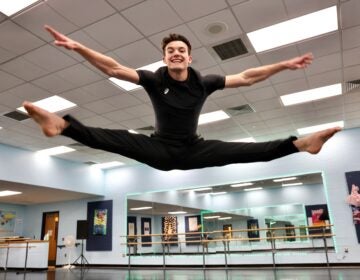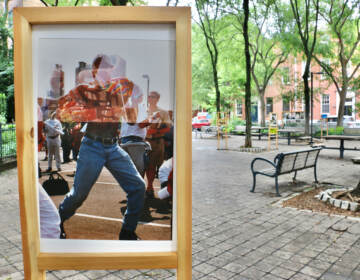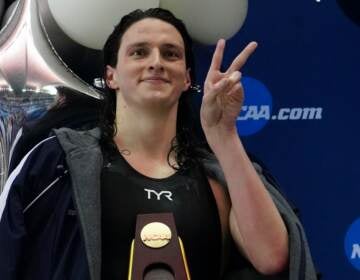Swing those partners: Gay square dancers gather in Philadelphia
The international convention of gay square dancers arrives here for the first time, following the callers’ directions at a Center City hotel.
Listen 3:15-

Marilyn 'Zip' Warmerdam calls a 'tip' at a Center City hotel ballroom during the 36th annual LGBT Square Dance Convention.
-
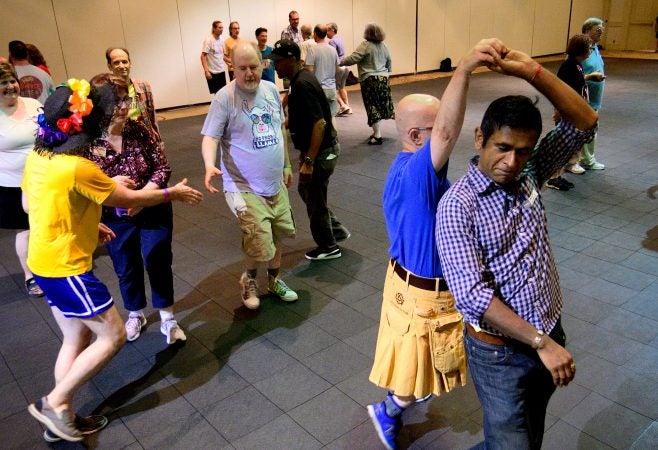
A Center City hotel ballroom is the stage for the 36th LGBT Square Dance Convention. The annual event is organized by the International Association of Gay Square Dance Clubs. (Bastiaan Slabbers for WHYY)
-
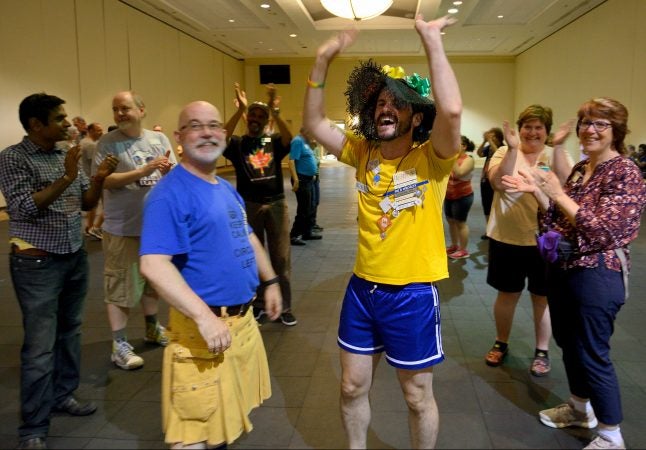
Marilyn 'Zip' Warmerdam receives cheers after calling a fifteen minute tip during the 36th LGBT Square Dance Convention. The annual event is organized by the International Association of Gay Square Dance Clubs. (Bastiaan Slabbers for WHYY)
-
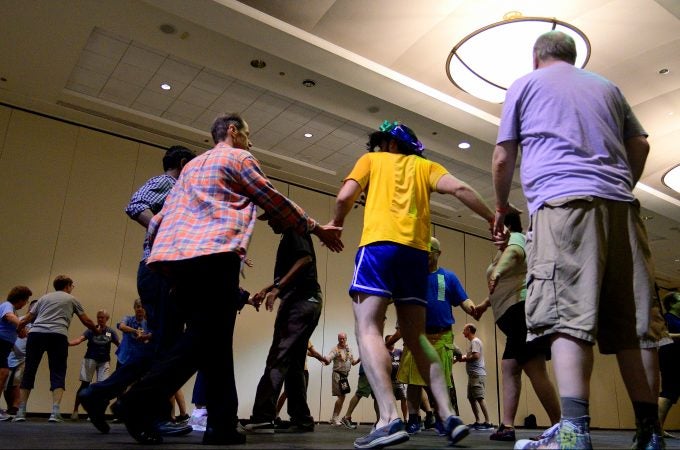
A Center City hotel ballroom is the stage for the 36th LGBT Square Dance Convention. The annual event is organized by the International Association of Gay Square Dance Clubs. (Bastiaan Slabbers for WHYY)
-
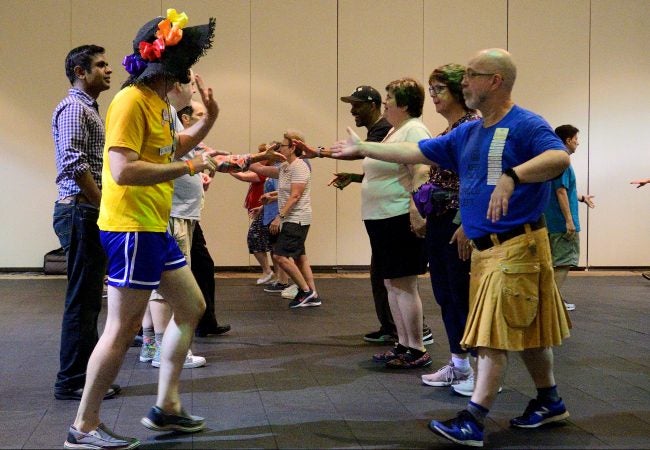
A Center City hotel ballroom is the stage for the 36th LGBT Square Dance Convention. The annual event is organized by the International Association of Gay Square Dance Clubs. (Bastiaan Slabbers for WHYY)
-
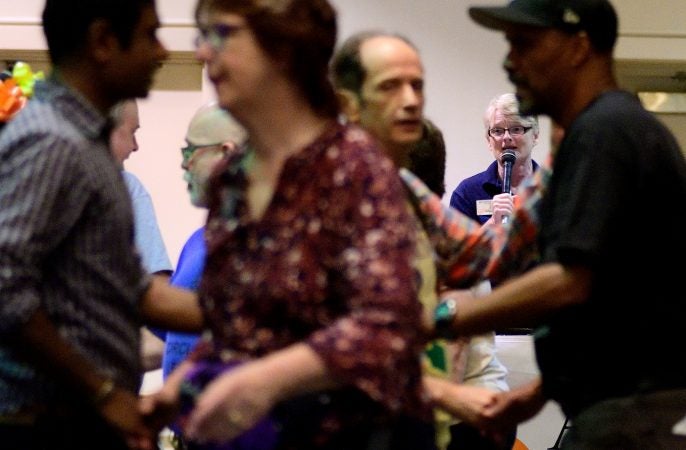
In the background Marilyn 'Zip' Warmerdam calls a 'tip' at a Center City hotel ballroom during the 36th annual LGBT Square Dance Convention. (Bastiaan Slabbers for WHYY)
-
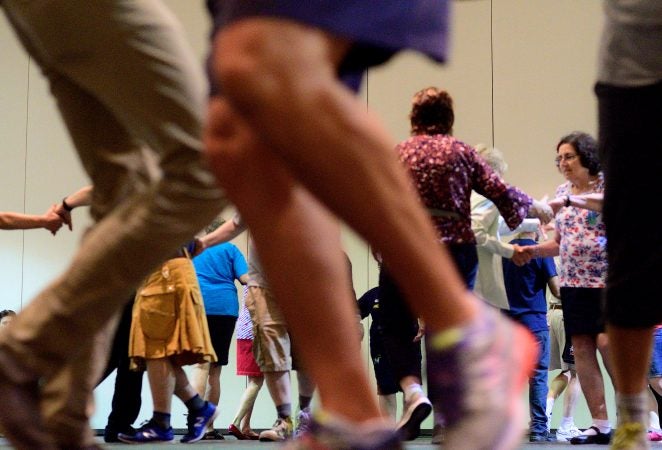
A Center City hotel ballroom is the stage for the 36th LGBT Square Dance Convention. The annual event is organized by the International Association of Gay Square Dance Clubs. (Bastiaan Slabbers for WHYY)
-
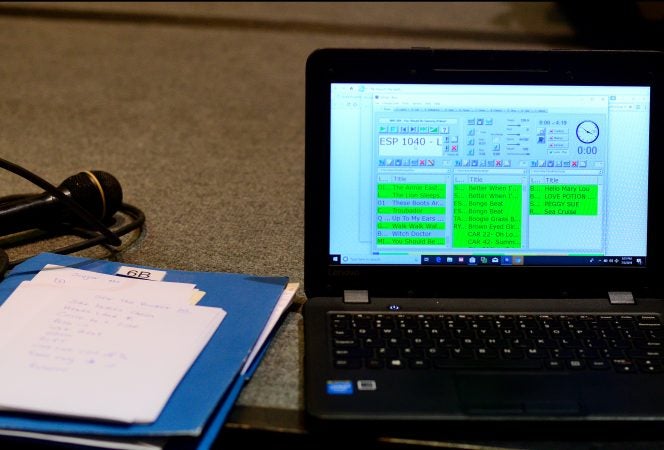
Paper notes lay next to a laptop used by Marilyn 'Zip' Warmerdam to call a 'tip' at a Center City hotel ballroom during the 36th annual LGBT Square Dance Convention. (Bastiaan Slabbers for WHYY)
-
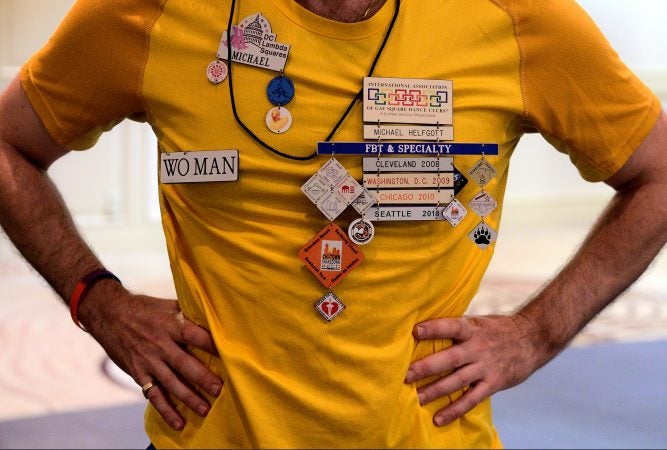
A Center City hotel ballroom is the stage for the 36th LGBT Square Dance Convention. The annual event is organized by the International Association of Gay Square Dance Clubs. (Bastiaan Slabbers for WHYY)
-
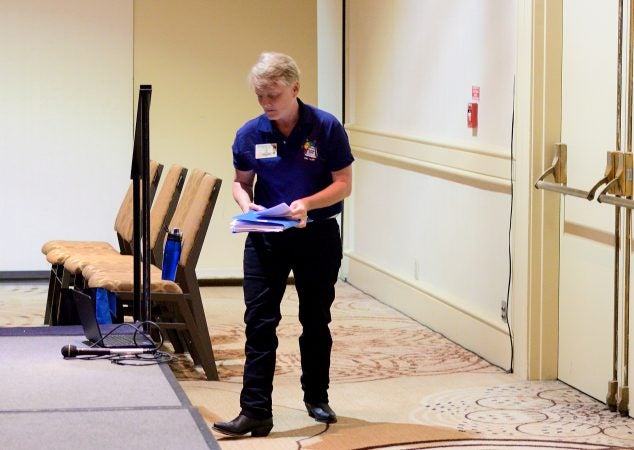
Marilyn Zip Warmerdam prepares to be the caller for a tip at a Center City hotel ballroom during the 36th annual LGBT Square Dance Convention. (Bastiaan Slabbers for WHYY)
One evening back in the 1990s, when Marilyn Warmerdam was in her 20s, she called up some old friends she hadn’t seen in a long time and asked if they wanted to get together.
“They said, ‘You can’t see us unless you come out Tuesday nights to go square dancing,’ ” Warmerdam recalled. “Square dancing? I play softball. I play rugby. I’m not square dancing.”
Two weeks later, she called again and got the same ultimatum. “I thought, that’s really nerdy. I can’t do that.”
That was then. This is now. Warmerdam, who goes by “Zip,” is a square dance caller in Philadelphia, often calling for the local gay club Independence Squares.
On Wednesday, when she announced herself to a Center City hotel ballroom full of dancers, cheers went up.
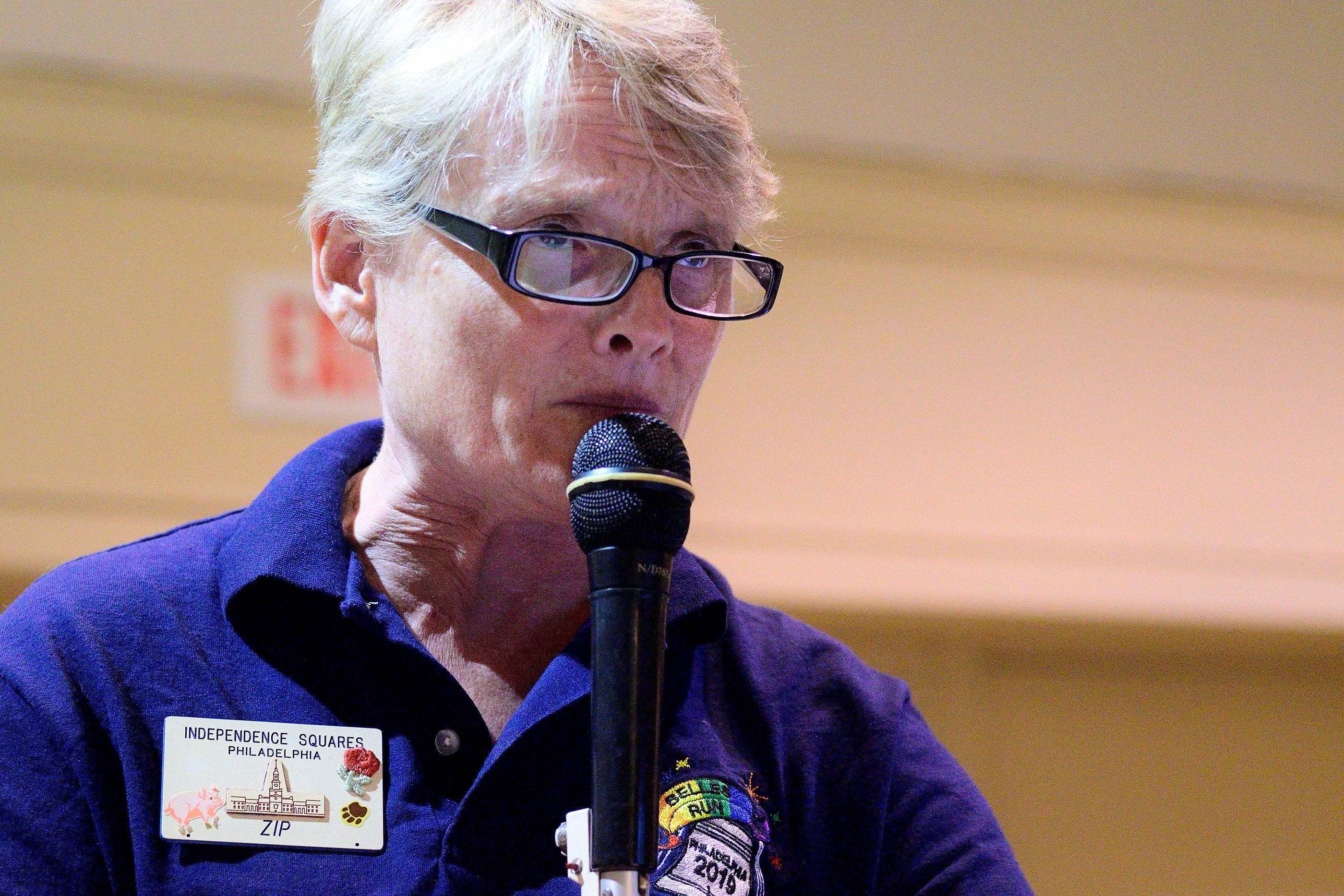
For the first time, Philadelphia is hosting the annual conference of the International Association of Gay Square Dancing Clubs. Now in its 36th year, it attracts about 800 people from across the country and the world, including Japan and parts of Europe.
Dozens of callers from around the United States are scheduled to do “tips,” two-song segments about 15 minutes long.
“There’s a leather tip, a bear tip, all kinds of things you don’t find in the straight world,” said Warmerdam.
For many people, square dancing is something they grudgingly learn in grade school, then immediately abandon. Those who rediscover the dance in adulthood learn it’s actually much different, and difficult to master.
“The thing that most people learned in grade school was more traditional square dancing, where each dance has a set pattern and you can memorize the dance,” said Betsy Gotta, who has been calling in the Philadelphia region for 57 years. “Here, the people are following directions. I give a command. They have to learn what the commands are.”

Calling square dance is like solving a moving puzzle. Four pairs of dancers start in a square, and then the caller tells them where to go, what to do, and with whom to do it. They might shoot the star, flip the diamond, pass the ocean, wheel and deal. The caller’s job is to bring them all home in the end, with their partners.
A really good caller can weave the dancers through a tip on the fly, improvising a pattern of steps. Usually, however, callers plan out their patterns in advance.
There’s an added complication in gay square dancing.
In traditional square dancing, the men are partnered with women, and they typically wear color-coordinated outfits to help the callers visually keep track of who is partnered with whom. But in gay square dancing, the partners are not traditionally gendered, and their clothes don’t match.
“Here it’s like, ‘OK, Jimmy’s dancing with Johnny, and Mary’s over here with whomever,’ ” said Warmerdam. “You have to write it down. It’s challenging.”
Gotta started out as a teenager in the early 1960s, calling for straight dances, and now she’s an in-demand caller for both gay and straight dancers. She is a longtime member of the Gay Callers Association, wearing the 20-year medallion around her neck to prove it.
She calls dancers “boys” and “girls,” regardless of their gender. To keep track of who is doing which steps, Gotta occasionally incorporates the phrase “girls identify” in her patter. The dancers doing the girl steps raise their hands.
Over the decades, Gotta has weathered the ups and downs of square dancing. She saw a spike in popularity in the late 1970s and early 80s, spurred along by the movie “Urban Cowboy.” After that faded, she noticed gay people coming on the scene.
“A lot of gay people were looking for places to socialize other than the bars and bathhouses. Square dancing provided a good, healthy alternative to that without the pressure of going home with somebody,” she said. “There were a lot of younger dancers in the ’90s.”
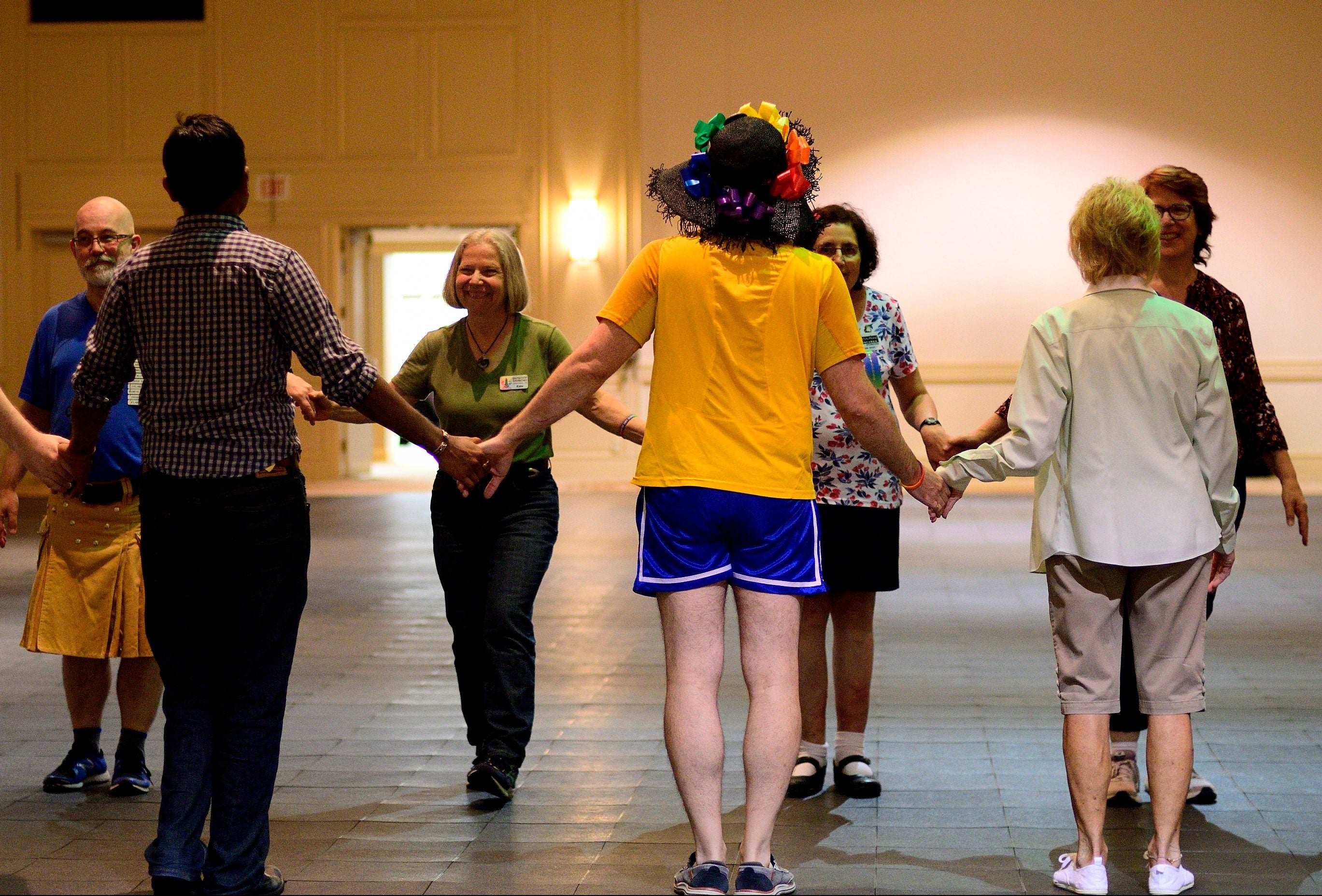
Not so much here at the convention. Attendees tend to skew 50 and older — you see a lot of comfortable shorts and knee braces — with a smattering of younger people on the floor.
There are also a fair number of straight dancers.
“It’s a sense of community,” said Warmerdam. “Not just gay people. It’s the mom with a gay son, the grandparents, the neighbors of the gay couple. They want to know more about the gay community. They see us in Pride [parade] and say, ‘Hey, they look like they’re having fun.’ ”
WHYY is your source for fact-based, in-depth journalism and information. As a nonprofit organization, we rely on financial support from readers like you. Please give today.



